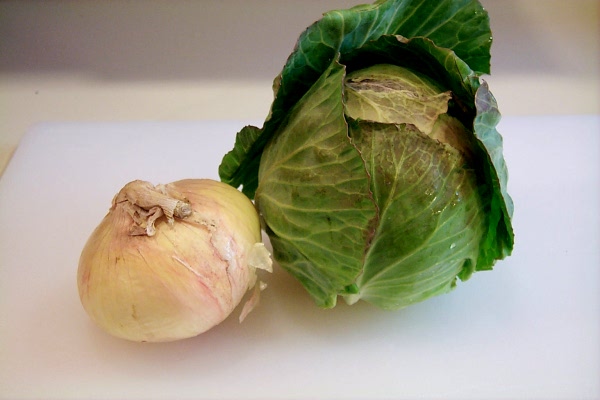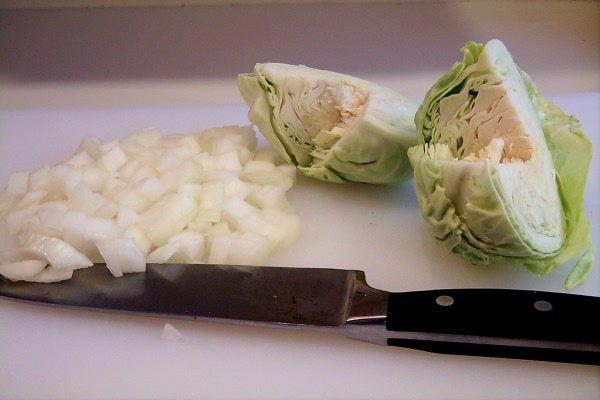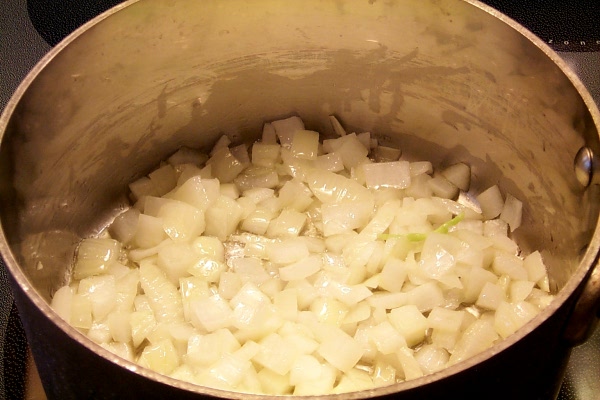
Cabbage in sweet and sour sauce
A friend in California has been asking for my recipe for cabbage in red sweet and sour sauce. Rather than typing something into an email, I thought I’d take some photos and blog it. James-Michael used to frequently request this dish back in San Francisco. For years, we never lived far apart, and we kept up the tradition of Sunday night supper. Many is the time I rode my scooter in a cold fog over Twin Peaks to cook at his apartment. More often I cooked at my apartment, and James-Michael had the more important task of selecting the after-supper DVDs.
Those of you who are more experienced cooks, please excuse the detail. This is a tutorial for James-Michael, who is still a novice cook. As I’ve mentioned before, I rarely follow recipes exactly. Rather, I read recipes for the concept and then run with it.
This concept came from a recipe that was included with my Aeternum pressure cooker, made in Italy, which I bought in the 1970s. The original recipe was for a whole cabbage, with the stalk excavated, stuffed with Italian sausage. Though I used to make the stuffed version, with vegetarian stuffings, for years I’ve mostly just used plain cabbage, cut in half and with the stalk removed. You can make it in a pressure cooker (especially if the cabbage is whole and stuffed), but you can also use a covered pot.

1. I’d suggest starting with a smallish head of cabbage. Remove the outer leaves and wash it. You also need a nice, strong onion. By the way, I bought this cabbage at Whole Foods. It’s organic and was grown in Watauga County, a mountain county not too far to the west of here.

2. Cut the cabbage in halves. Cut out the stalk. Chop the onion coarsely.

3. Cook the onion gently in a tablespoon or so of olive oil. No need to brown it. Just cook it until it’s soft and translucent.

4. Add about one and a half cups of water. Bring the water to a boil. Add about a tablespoon of sugar. I use raw sugar. Also add about three tablespoons of vinegar, some salt, and some pepper. Add two or three tablespoons of tomato paste or ketchup, enough to give the sauce a nice red color. Optional: add a small handful of raisins.

5. I don’t think this dish would come out right without the celery seed. Use about half a teaspoon, or a little more if you like.

6. When all these ingredients have been added to the sauce, boil the sauce gently for a few minutes. Then put in the cabbage. Ladle the sauce over the cabbage. Cover the pot and let it simmer gently for about an hour. Every 10 minutes or so, lift the lid and ladle more sauce over the cabbage. Test the cabbage with a fork to see if it is becoming tender. When the cabbage is tender, consider how much sauce you have. If there’s too much sauce, and it’s watery, then after the cabbage is tender remove the lid, turn up the heat, and boil off some of the water. If at any point while the cabbage is cooking the amount of sauce gets too low, add a little water. Half the art of cooking is getting the sauce right. You want it to be concentrated and savory, never watery.

Here’s your virtual supper! I served the cabbage with pinto beans and rice. To make the rice, I chopped some raw nuts in a blender, then browned the nuts lightly in a pan. When the nuts were browned, I added the rice and stirred in a spoonful of the cabbage sauce to moisten it. Then, at the table, I spooned some cabbage sauce over the rice.


